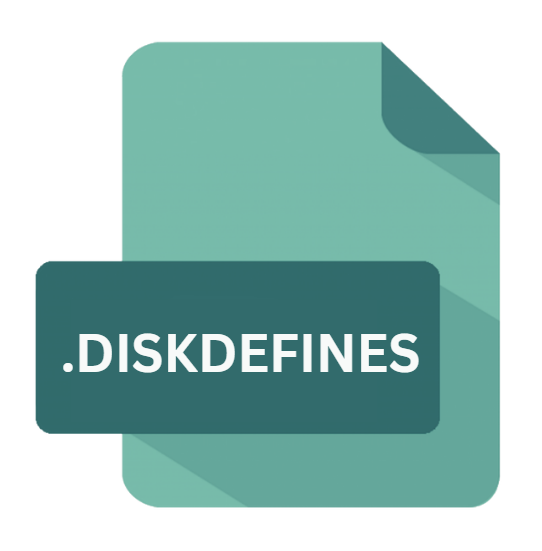.DISKDEFINES File Extension

Linux LiveCD Information File
| Developer | Update Soon |
| Popularity | |
| Category | Misc Files |
| Format | .DISKDEFINES |
| Cross Platform | Update Soon |
What is an DISKDEFINES file?
The .DISKDEFINES file extension is a crucial component found in Linux LiveCD environments, serving as an information file that contains metadata about the LiveCD distribution.
These files are typically used within Linux distributions that offer live environments, allowing users to boot into a fully functional operating system without installing it on the hard drive.
This feature is particularly useful for testing, troubleshooting, or using Linux on a temporary basis without altering the host system.
More Information.
The history of the .DISKDEFINES file is closely tied to the development of Linux LiveCDs. The first Linux LiveCD was Knoppix, released in 2000 by Klaus Knopper.
The success of Knoppix demonstrated the potential for LiveCDs as a method for distributing Linux. Soon, many other distributions began offering LiveCD versions, and the .DISKDEFINES file became a standard component of these distributions.
The initial purpose of the .DISKDEFINES file was to provide a standardized way to store information about the LiveCD. This included details such as the distribution’s name, version, and release notes.
The file was used during the boot process to display relevant information to the user, such as the distribution name and version number. It also played a role in identifying the correct boot parameters for the LiveCD environment.
Origin Of This File.
The .DISKDEFINES file originated in the context of Linux distributions, specifically within the LiveCD format.
The concept of a LiveCD emerged as Linux grew in popularity, with developers seeking a way to provide a full operating system experience without requiring installation.
This led to the creation of bootable CDs, and later USB drives, that contained a complete Linux environment.
The .DISKDEFINES file was developed to store essential information about the LiveCD, such as the name of the distribution, version, and other details that might be necessary for the user or the system during the boot process.
File Structure Technical Specification.
The .DISKDEFINES file is a plain text file that contains several key pieces of information. While the exact structure can vary depending on the distribution, it typically includes the following elements:
- Distribution Name: This specifies the name of the Linux distribution on the LiveCD. For example, “Ubuntu,” “Fedora,” or “Debian.”
- Version Number: The version of the distribution is also included, helping users identify the specific release.
- Description: A brief description of the distribution, which might include information about the kernel version, desktop environment, or other key features.
- Checksum Data: In some cases, the file includes checksum values (such as MD5 or SHA256) for the disc’s contents. This allows users to verify the integrity of the LiveCD before booting.
- Boot Parameters: These are additional parameters that the bootloader might need to know, such as the default language, keyboard layout, or display resolution.
- Custom Scripts: Some distributions include custom scripts or commands that should be executed during the boot process. These might be used to configure hardware, set up network connections, or perform other tasks necessary for the LiveCD to function correctly.
How to Convert the File?
Conversion methods for .DISKDEFINES files depend on the software that created them. Typically, these files are not intended to be converted into other formats as they are highly specialized. If conversion is necessary, it might involve:
- Exporting Configuration: Some software may allow exporting disk configuration data into standard formats like XML or JSON for interoperability.
- Using Conversion Tools: Specialized tools or scripts may be developed to read and translate .DISKDEFINES files into other formats based on specific requirements.
Advantages And Disadvantages.
Advantages:
- Simplicity: The .DISKDEFINES file is a simple text file, making it easy to create, edit, and read. Its straightforward structure ensures that it can be used across various Linux distributions without compatibility issues.
- Lightweight: Being a plain text file, the .DISKDEFINES file has a minimal footprint, making it ideal for inclusion in lightweight LiveCD environments where space is at a premium.
- Essential Metadata: The file provides essential metadata about the LiveCD, helping users and systems identify the distribution, its version, and other critical details during the boot process.
Disadvantages:
- Limited Information: While the .DISKDEFINES file provides basic information, it is limited in scope. It does not support more complex metadata or advanced configuration options that might be needed in some scenarios.
- Manual Updates: Since the file is typically static, any changes to the LiveCD, such as updates or modifications, require manual updates to the .DISKDEFINES file. This can lead to discrepancies if not managed correctly.
- Dependency on Text Format: The reliance on plain text means that the file lacks the security or structure provided by more complex file formats, such as XML or JSON. This could be a disadvantage in environments where data integrity and validation are critical.
How to Open DISKDEFINES?
Open In Windows
- Dedicated Software: The primary method to open a .DISKDEFINES file on Windows is by using the software that generated the file. This software typically includes built-in tools for managing disk configurations.
- File Association: Ensure that the file type is associated with the correct application through Windows’ file association settings.
Open In Linux
- Command-Line Tools: On Linux, you can use command-line utilities to interact with disk configuration files. The exact commands will depend on the specific format of the .DISKDEFINES file.
- Custom Scripts: You might need to write or use custom scripts to parse and understand the file contents.
Open In MAC
- Management Software: Similar to Windows, use the software that created the .DISKDEFINES file. If no native support exists, third-party disk management tools may be available.
- Text Editor: For inspection purposes, you might open the file with a text editor, but it may not be human-readable without context.











